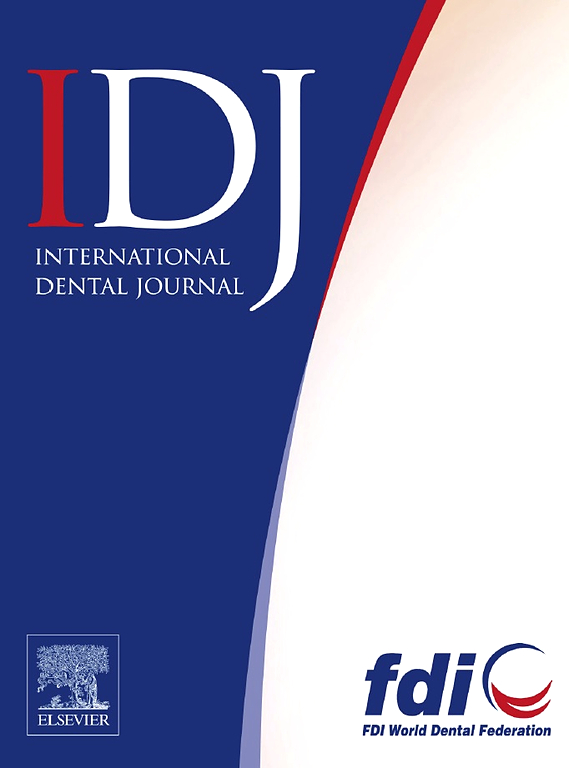2016-2023年欧洲牙科教育、组织和监管动态
IF 3.2
3区 医学
Q1 DENTISTRY, ORAL SURGERY & MEDICINE
引用次数: 0
摘要
本研究考察了欧洲各国牙科教育、牙医组织、牙科实践监管的变化,并比较了2016年至2023年FDI世界牙科联合会成员国和世卫组织-欧洲地区之间的差异。方法欧盟- fdi在2016年和2023年对45个国家(34个欧盟成员国和11个非欧盟成员国)进行了调查。通过国家牙科协会收集有关实践类型、法律框架、教育和组织的数据。统计分析采用t检验和Fisher精确检验来比较两项调查随时间的变化。结果私营诊所(自雇)仍是主导模式(48.65%±28.28%,可信区间(CI)[43.11 / 54.19]),其次是私人诊所(24.32%±20.33%,CI[20.34/28.30])和集体诊所(15.27%±20.39%,CI[11.27/19.27])、公共卫生系统(13.76%±20.17% (CI[9.81, 17.71])、市/国家诊所(8.98%±17.86% CI[5.48/12.48])、口腔保健中心(6.61%±14.19% CI[3.83/9.39])、大学诊所(4.90%±6.82% CI[3.56/6.24])、和行业(0.36%±0.78% CI[0.21/0.51])。在小组实践中观察到统计学上显著的增长(双尾;F=14.53 P <;.01)和口腔保健中心(双尾;F=30.72 P <;. 01)。男女牙科学生的比例保持稳定在约1:2(双尾;F=0.87, P = 0.66 (m);F=0.85, P = 0.60 (F))。共有三分之二的国家允许非牙科投资者主导的口腔保健中心(P = 1.00)。结论欧洲牙科目前正在发生重大变化,包括越来越多地采用企业和团体实践模式,牙科教育中男女比例约为2:1,城乡护理差距越来越大。法律框架和非牙科投资者的日益参与可能影响保健的质量和可及性,特别是在农村地区。未来的研究应该检查这些变化对病人护理、牙医满意度和灵活工作模式需求的长期影响。本文章由计算机程序翻译,如有差异,请以英文原文为准。
Dynamics of Dental Education, Organization, and Regulation of Dental Practice in Europe 2016-2023
Background
This study examines shifts in dental education, organization of dentists, changes in regulation of dental practice across European countries and comparing differences between 2016 and 2023 of member states of the FDI World Dental Federation and WHO-Europe region.
Methods
Surveys conducted by the ERO-FDI in 2016 and 2023 included 45 countries (34 ERO and 11 non-members). Data on practice types, legal frameworks, education, and organization were collected via national dental associations. Statistical analyses employed t-tests and Fisher's exact tests to compare the two surveys over time.
Results
Private practice (self-employment) remained the dominant model (48.65%±28.28%, confidence interval (CI) [43.11 / 54.19]), followed by employment in private practice (24.32% ± 20.33%, CI [20.34/28.30]) and group practice (15.27%±20.39%, CI [11.27/19.27]), public health system (13.76%±20.17% (CI [9.81, 17.71]), municipal/national clinic (8.98%±17.86% CI [5.48/12.48]), oral healthcare center (6.61%±14.19% CI [3.83/9.39]), university clinic (4.90%±6.82% CI [3.56/6.24]), and industry (0.36%±0.78% CI [0.21/0.51]). Statistically significant growth was observed in group practice (two-tailed; F=14.53 P < .01) and oral healthcare center (two-tailed; F=30.72 P < .01). Male/female dental student ratio remained stable at approximately 1:2 (two-tailed; F=0.87, P = .66 (m); F=0.85, P = .60 (f)). A total of two-thirds of the countries allow non-dental investor-led oral healthcare centers (P = 1.00).
Conclusions
European dentistry is currently undergoing significant changes, including an increasing adoption of corporate and group practice models, approximately a 2:1 female to male ratio in dental education, and a growing urban-rural divide in care. Legal frameworks and the increasing involvement of non-dental investors could affect the quality and accessibility of care, particularly in rural areas. Future research should examine the long-term impact of these changes on patient care, dentist satisfaction, and the demand for flexible working models.
求助全文
通过发布文献求助,成功后即可免费获取论文全文。
去求助
来源期刊

International dental journal
医学-牙科与口腔外科
CiteScore
4.80
自引率
6.10%
发文量
159
审稿时长
63 days
期刊介绍:
The International Dental Journal features peer-reviewed, scientific articles relevant to international oral health issues, as well as practical, informative articles aimed at clinicians.
 求助内容:
求助内容: 应助结果提醒方式:
应助结果提醒方式:


